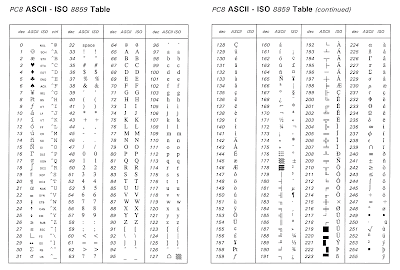Compiler : Finite State Machine code sample
Sample 0 :
import java.io.*;
import
java.util.*;
/*
String containing
an even number of one
0 1
------------
A* A B
B B A
------------
*/
public class FSM
{
final static int STATES=2, INPUTS=2;
public static void main (String[] args)
throws IOException{
boolean [] accept = new
boolean[STATES];
int [][] fsm = new int[STATES][INPUTS];
accept[0] = true;
accept[1] = false;
fsm[0][0] = 0;
fsm[0][1] = 1;
fsm[1][0] = 1;
fsm[1][1] = 0;
// State A = 0, State B = 1
int inp = 0;
int state = 0;
try{
inp = System.in.read() - '0';
while(inp >= 0 && inp
< INPUTS){
state = fsm[state][inp];
inp = System.in.read() - '0';
}
}
catch(IOException ioe){
System.out.println("IO error
" + ioe);
}
if(accept[state]){
System.out.println("Accepted");
}else{
System.out.println("Rejected");
}
}
Sample 1 : Strings containing exactly three zeros (the input alphabet is {0,1})
Explanation:
States Definition:
- State 0: Initial state, no zeros seen.
- State 1: One zero seen.
- State 2: Two zeros seen.
- State 3: Exactly three zeros seen (accepting state).
- State 4: More than three zeros seen (rejecting state).
Transitions:
- From State 0:
- On input '0', transition to State 1.
- On input '1', stay in State 0.
- From State 1:
- On input '0', transition to State 2.
- On input '1', stay in State 1.
- From State 2:
- On input '0', transition to State 3.
- On input '1', stay in State 2.
- From State 3:
- On input '0', transition to State 4.
- On input '1', stay in State 3.
- From State 4:
- On input '0' or '1', stay in State 4 (as we have seen more than three zeros).
- From State 0:
Accepting State:
- Only State 3 is accepting, meaning the input string is accepted only if it contains exactly three zeros.
Usage:
- The program reads input characters one by one and transitions between states based on the input.
- Once input reading is complete (when a non-binary character is encountered), the program checks the final state.
- If the final state is the accepting state (State 3), it prints "Accepted".
- Otherwise, it prints "Rejected".
Sample 2 : Strings containing four consecutive a’s (the input alphabet is {a,b})
Explanation:
States Definition:
- State 0: Initial state, no 'a's seen.
- State 1: One consecutive 'a' seen.
- State 2: Two consecutive 'a's seen.
- State 3: Three consecutive 'a's seen.
- State 4: Four consecutive 'a's seen (accepting state).
Transitions:
- From State 0:
- On input 'a' (converted to 0), transition to State 1.
- On input 'b' (converted to 1), stay in State 0.
- From State 1:
- On input 'a', transition to State 2.
- On input 'b', transition back to State 0.
- From State 2:
- On input 'a', transition to State 3.
- On input 'b', transition back to State 0.
- From State 3:
- On input 'a', transition to State 4.
- On input 'b', transition back to State 0.
- From State 4:
- On input 'a' or 'b', stay in State 4 (accepting state, remains accepting).
- From State 0:
Accepting State:
- Only State 4 is accepting, meaning the input string is accepted if and only if it contains a sequence of exactly four consecutive 'a's.
Usage:
- The program reads input characters one by one and transitions between states based on the input.
- Once input reading is complete (when a non-'a' or non-'b' character is encountered), the program checks the final state.
- If the final state is the accepting state (State 4), it prints "Accepted".
- Otherwise, it prints "Rejected".
Sample 3 : (a+b)*.(c+d)
Explanation:
States Definition:
- State 0: Initial state, accepting
(a+b)*. - State 1: After seeing the first
cord. - State 2: Accepting state after seeing
cord.
- State 0: Initial state, accepting
Transitions:
- From State 0:
- On input 'a' or 'b', stay in State 0.
- On input 'c' or 'd', move to State 1.
- From State 1:
- Any input ('a', 'b', 'c', or 'd') leads to State 2.
- From State 2:
- Stay in State 2 for any input.
- From State 0:
Accepting State:
- State 2 is accepting, meaning the input string is accepted if and only if it ends with either
cordafter any sequence ofas andbs.
- State 2 is accepting, meaning the input string is accepted if and only if it ends with either
Usage:
- The program reads input characters one by one and transitions between states based on the input.
- Once input reading is complete (when a non-'a', non-'b', non-'c', or non-'d' character is encountered), the program checks the final state.
- If the final state is the accepting state (State 2), it prints "Accepted".
- Otherwise, it prints "Rejected".


Ulasan